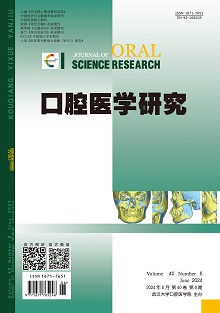|
|
Comparison of Er:YAG Laser, Resin Infiltrating, and Micro-grinding in Treatment of Enamel Demineralization
CAO Xuanxuan, JIANG Dandan, WU Nan, ZHOU Zheng, DAI Haitao
2024, 40(6):
496-500.
DOI: 10.13701/j.cnki.kqyxyj.2024.06.005
Objective: To compare and analyze the effects of Er:YAG laser, resin infiltration, and micro-grinding on tooth enamel demineralization. Methods: Forty-eight clinically extracted fresh premolars were collected and randomly divided into four groups after establishing artificial demineralization model. Group A was control group. Group B was micro-grinding group. Group C was permeable resin group. And group D was laser group. After 21 days, the four groups of isolated teeth were subjected to secondary demineralization. The microhardness and roughness of enamel surface was measured before treatment (t0), after demineralization (t1), after treatment (t2), and after secondary demineralization (t3). The treatment effect and surface structure of samples were observed by naked eyes and scanning electron microscope. Results: (1) At t0 and t1, there was no significant difference in enamel microhardness among four groups (P>0.05). At t2 and t3, the microhardness of group C was the largest, followed by group D and group B, and group A was the smallest. Except for group C and group D, there were significant differences among other groups (P<0.01). At t3, the microhardness of group A was lower than that at t1 (P<0.01), while those of groups B, C, and D were higher than that at t1 (P<0.01). (2) There was no significant difference in enamel surface roughness between groups at t0 and t1 (P>0.05). At t2 and t3, the roughness value of group C was the smallest, followed by group D and group B, and group A was the largest. There were significant differences among all groups (P<0.01). (3) Only the color of group C was basically normal observed by naked eye. (4) SEM observation showed that the surface voids of enamel in groups B, C, and D were significantly reduced compared with that in group A, and the smoothness was also improved. Conclusion: Resin infiltrated is superior to laser irradiation in improving the surface roughness of demineralized enamel, and obviously better than micro-grinding in improving the microhardness and anti-demineralization stability.
References |
Related Articles |
Metrics
|

